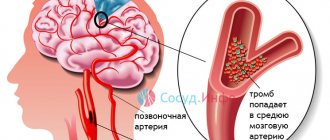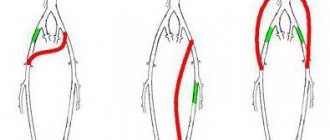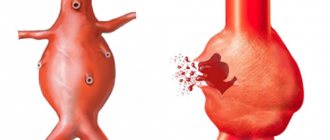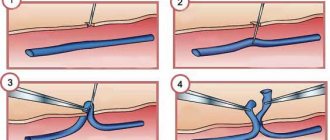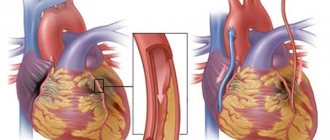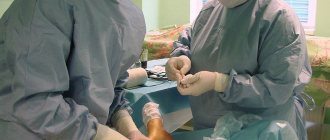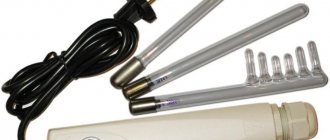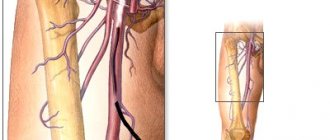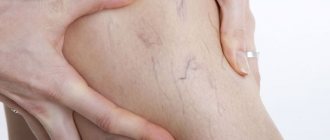The carotid (carotid) artery is a paired large vessel, which, together with smaller vertebral arteries, is responsible for feeding the brain. Violation of its patency leads to cerebral circulatory insufficiency with the risk of subsequent stroke, and the presence of a protrusion of the wall (aneurysm) is dangerous for rupture.
The only treatment option for severe stenosis and carotid artery aneurysm is surgery. Let's consider the main types of operations on the carotid arteries, their advantages, disadvantages, features of preoperative preparation, rehabilitation period, and possible risks.
The risk of stroke is a reason for surgery
Ischemic, or cerebral infarction, is the most common pathology of the blood flow system and brain cells. Every year, an increasing number of people die from ischemic stroke.
The pathology of stroke has become much younger over the past decade and is becoming the cause of death in young people.
The cause of cerebral infarction is the vascular pathology of atherosclerosis, leading to an increase in cholesterol plaques that cause occlusion in the neck area, and the result of the development of atherosclerosis in a complicated form is an ischemic stroke.
To avoid blockage of the cervical vessels, surgery is used to remove plaques and increase the arterial lumen.
The danger of developing a stroke is that the pathology that becomes a provocateur of cerebral infarction - atherosclerosis, occurs asymptomatically in the arteries in the neck for quite a long period of time, the consequences of progressive atherosclerosis of the cervical arteries always cause the greatest harm to the condition of the human body.
Impaired blood flow in the cerebral arteries makes a person disabled with severe limitations on the physical and mental level.
It is not always possible to restore human health after a stroke operation.
There are rare cases where the operation was performed instantly and brain function can be restored to 90.0% - 95.0%.
Postoperative period: complications and rehabilitation
The following complications may occur during the operation:
- ischemic damage to brain tissue (a stroke occurs when the intervention is performed incorrectly);
- injury to nerve endings;
- embolism;
- myocardial infarction;
- re-occurrence of atherosclerosis.
Management of the early postoperative period is carried out in a hospital setting. The patient spends the first 24 hours in the intensive care unit. Here, indicators of the functioning of the brain and cardiovascular system are monitored, and emergency assistance is provided in case of complications. You can get up a day after the procedure. They are gradually returning to their normal lifestyle. It is recommended to avoid any physical activity for a year. In addition, you must follow a special diet and take all medications prescribed by your doctor.
Indications for surgery for atherosclerosis
Surgery on the carotid artery is performed in two cases - to expand the arterial lumen, in case of narrowing, and also surgery to reconstruct the affected artery in case of stenosis.
The cause of stenosis of the arterial walls is the pathology of atherosclerosis, and the reason for the narrowing of the lumen, in addition to it, can be the pathology of thrombosis, or a bend in the arterial membrane. Sometimes the reason for surgery on the carotid artery may be its aneurysm.
Indications for surgery on the carotid artery may also include pathologies of the blood flow system:
- The narrowing of the arterial lumen is more than 70.0%, even in the absence of severe symptoms;
- Surgery when the arterial lumen is narrowed by more than half and with severe symptoms of cerebral ischemia, or after a period of transient attacks, or after an ischemic stroke;
- Stenosis of vascular walls up to 50.0% after an ischemic stroke, or after a transient attack;
- A sudden change in brain activity, or with established progressive cerebral ischemia;
- Affection of the carotid arteries by atherosclerosis on both sides is the main reason for surgery;
- With the development of atherosclerosis and stenosis on the carotid artery, on the vertebral vessels and on the subclavian soda, surgery is prescribed simultaneously to eliminate fatal risks.
Open surgery on the great vessels is a rather dangerous surgical technique, especially if you take into account the age of the patients - they are elderly people.
Before prescribing an operation, the attending doctor must conduct a complete examination of the patient in order to avoid complications after surgical treatment.
Types of prostheses, requirements for them
The first models of prostheses had a rigid frame and consisted of plexiglass. They led to inflammation and even tissue necrosis in the area of contact with the arterial wall. Lack of flexibility and injury are also characteristic of polyethylene tubes. Products made of porous plastic with a spongy structure turned out to be more successful.
Modern arterial prostheses have the following characteristics:
- the material does not interact with the patient’s tissues;
- the tube has holes (pores) for connective tissue fibers to grow through;
- average pore size (large ones provoke bleeding, and small ones do not allow the prosthesis to take root);
- corrugated surface that allows bending without pinching (for example, when moving a leg in a joint);
- the diameter is larger than the prosthetic vessel, since its inner surface is covered with fibrin threads over time.
These requirements are met by knitted prostheses made of Dacron, terylene or Mylar threads, which are manufactured on special equipment.
We recommend reading the article on vascular reconstruction. From it you will learn about operations on the aorta and large arteries, and how to perform them. And here is more information about surgery for aortic aneurysm.
Contraindications
Surgeries to remove atherosclerotic plaques on the carotid artery are not prescribed for the following pathologies in the body:
- Pathologies of the heart organ that occur in severe form;
- Lung pathologies in the stage of decompensation;
- Diseases of the kidney organ (any type of operation becomes impossible);
- Coma;
- Stroke in the acute stage of pathology development;
- Hemorrhage of cerebral vessels and necrotic changes in brain cells;
- Occlusion in the area of the neck of the carotid arteries, which led to the death of most of the neurons and there is no way to restore the functionality of the brain.
Causes of the disease
Kinking SA is often a congenital pathology. This deviation is due to the predominance of elastic fibers over collagen, which makes the artery walls more susceptible to wear and deformation. In addition, excess length of the SA is a phenomenon that forms during the development of the fetus in the womb. If your closest relatives have been diagnosed with a similar disorder, it is recommended to consult a doctor and undergo an examination.
Pathological tortuosity of the SA may be acquired. Risk factors are:
- sedentary work, during which the neck muscles are excessively tense;
- damage and loss of elasticity of the walls of blood vessels, which is associated with age, drinking alcohol, smoking;
- hypertension in advanced form;
- cervical osteochondrosis;
- injuries;
- sharp fluctuations in blood pressure during VSD;
- atherosclerosis, accompanied by the deposition of cholesterol in blood vessels.
Physical inactivity and excess weight also negatively affect the SA and can cause them to bend.
How to prepare for surgery?
Today, medicine has developed quite a few methods for performing operations on vessels that are damaged by the pathology of atherosclerosis.
In addition to open operations, closed minimally invasive operations are used to restore vascular walls and expand the lumen for normal blood flow.
The minimally invasive technique is less dangerous for the human body, so surgeons try to use the minimally invasive method.
Before prescribing a patient for surgery, the doctor conducts a full examination of the body and sends him for laboratory diagnostics and instrumental examination:
- General analysis of blood composition;
- General analysis of urine composition;
- Biochemical analysis for cholesterol and sugar;
- Tests for AIDS, HIV, as well as syphilis and all types of hepatitis;
- Analysis for prothrombin time and hemoglobin.
Instrumental examination of the body is carried out using the following methods:
- Studying the functioning of the heart organ using electrocardiography (ECG);
- The condition of the lungs is checked using fluorography;
- Ultrasound scanning with duplex;
- The method of studying arteries is angiography;
- Vascular magnetic resonance imaging (MRI);
- Computed tomography of the multi-spiral method.
General analysis of blood composition
Possible complications
The most common adverse consequence of surgery is thrombosis of the prosthesis. It may occur immediately after surgery. In this case, it is associated with technical violations - uneven sutures, penetration of suture material into the artery, insufficient blood flushing or removal of clots.
After 3 years or more, late thrombosis occurs due to detachment of the newly formed inner layer. If the pore size is small, not enough fibrin threads penetrate through the prosthesis; the structure of this new tissue is fragile, which leads to tears and the formation of blood clots at the site of cracks.
To diagnose early thrombosis, it is necessary to monitor the pulsation of the arteries after surgery; if it is not detected, then urgent reoperation is indicated.
To identify the risk of late complications, patients need to periodically undergo vascular ultrasound in duplex scanning mode, MRI, CT or standard angiography. If the prosthesis becomes blocked in the long term, it is replaced with a new one.
The second problem that surgeons face when replacing arteries is infection. It is accompanied by:
- divergence of seams;
- massive internal hemorrhage;
- formation of a pulsating hematoma;
- septic process;
- intoxication with high body temperature.
In such cases, emergency removal of the prosthesis and the application of anastomoses (connections) bypassing the area of suppuration are indicated.
In the video about the aortic replacement surgery:
Types of operations on the carotid arteries
The list of operations that can be used on the carotid arteries to clean blood vessels from atherosclerotic plaques and expand the lumen of the main arteries in the pathology of atherosclerosis:
- Carotid endarterectomy;
- Endarterectomy of inversion type;
- Arterial stenting;
- Artery replacement technique.
The type of operation performed is chosen by the doctor, based on a diagnostic study of the body and pathology.
The choice of operating method is influenced by:
- Technical equipment of this clinic;
- Conditions of the vascular membranes;
- The degree of vascular damage by atherosclerosis;
- Age category of the patient;
- Pathologies associated with atherosclerosis that develop in the patient’s body;
- The professionalism of surgeons to perform minimally invasive techniques on blood vessels.
Carotid artery surgery
Carotid endarterectomy
Carotid endarterectomy is an open type of operation on the main carotid arteries affected by atherosclerosis.
The principle of this surgical intervention is to cut off the atherosclerotic plaque from the vessel wall. The operation takes place under general anesthesia.
The duration of surgery depends on the size of the atherosclerotic plaque and the condition of the vascular membranes. This operation is common for the treatment of atherosclerosis, as well as for pathology of the cervical artery, when the supply to brain cells is blocked.
The operation is performed by experienced vascular surgeons, because open surgery is very dangerous for humans.
The doctor makes incisions in the skin and locates the part of the artery affected by atherosclerosis. The nerve fibers are carefully disconnected from the vessel.
The medication Heparin is injected into the vessel, and the vessels are clamped to the site of the lesion and after it.
The location of the plaque is dissected and the vessel is completely cleansed of cholesterol deposits.
After the vessel is completely cleaned, it is washed with a special solution to wash away all remaining fat and after that the vessel is stitched at the incision site.
After this, the doctor checks the quality of the sutures, their tightness, removes the clamps from the line and opens the blood flow in this artery. Wounds on the skin are sutured using the standard method, only a drain is inserted at the bottom of the incision.
Carotid endarterectomy
Endarterectomy of inversion type
Endarterectomy of the inversion type is also an open vascular surgery that is used to treat the pathology of atherosclerosis. The operation takes place on the internal carotid artery (ICA) at the beginning of its branch.
Operating principle:
- The vessel is cut off from the bloodstream in front of the lesion;
- It is cleared of atherosclerotic formations;
- Plaques are removed from the general SA, as well as from the external SA;
- All areas are washed with saline solution to remove residual fat;
- The vascular membranes are sewn together and their tightness is checked;
- Remove the clamps from the arteries and establish blood flow along these lines;
- Tissue suturing occurs according to the classical operating method.
The disadvantages of this technique are that with its help it is impossible to remove large atherosclerotic plaques.
Eversion endarterectomy
Carotid artery stenting
This is a minimally invasive method of treating blood vessels for atherosclerosis. This method is less traumatic and causes fewer negative consequences after this operation. Treatment is carried out under general and sometimes local anesthesia.
A puncture is made in the artery, rather than an incision, as in open forms of surgery. A stent is inserted into this puncture, which expands the lumen of the affected part of the vessel lining and holds it in this position.
Also, with the stenting technique, filters are installed along the entire length of the carotid artery, which trap the remnants of atherosclerotic plaque that could come off during surgery, protecting the blood flow system from thrombosis of vessels with a small diameter.
Arterial stenting
Prosthetics
Prosthetics, or restoration of an artery using an artificial implant, is carried out when most of the main carotid vessel is affected by atherosclerosis and other methods for removing atherosclerotic plaques will not bring the desired result.
The essence of the prosthetic method:
- The vessel is cut off from the bloodstream in front of the lesion;
- The severed artery is connected to the blood flow system using an artificial prosthesis;
- The part of the artery that was cut off is sewn to the prosthesis;
- An artery is sewn to the second end of the prosthesis after cutting off the affected area;
- The diameter of the arterial prosthesis tube is selected before the operation and is based on the results of a diagnostic study of the body;
- After the operation, a drainage is inserted at the puncture site.
Arterial replacement
Intervention for vascular tortuosity
Under the influence of pathological factors on its walls, the internal carotid artery can bend and change its direction. Then it forms kinks or folds.
Every third patient who has suffered a stroke is diagnosed with tortuosity of the carotid arteries.
Depending on the nature of the arterial changes, the choice of surgical intervention technique occurs:
- loop formation – coiling;
- bending at an acute angle - kinking;
- increase in vessel length.
The affected fragment is cut off, then the vessel is straightened - redressed.
Consequences
The period after surgical intervention in the bloodstream system is often favorable for the patient. Postoperative complications are not frequent and are only a consequence of the open type of surgery.
After minimally invasive operations to treat atherosclerosis, there are practically no complications.
After an open type of operation, damage to the nerve fibers that are very close to the carotid artery is possible.
The consequences of such a defeat are manifested in the following changes:
- The timbre of the patient's voice changes;
- The process of swallowing food is disrupted;
- Paralysis of facial muscles appears;
- The face becomes asymmetrical;
- Sometimes the head may be positioned slightly to one side.
Consequences may also appear at the site of the incision and drainage installation:
- Bleeding of varying intensity from the wound;
- Formation of pus at the surgical site and its leakage from the drainage;
- Depressurization of sutures on the carotid artery.
Complications may also arise with the stenting technique, although they occur in isolated cases:
- Pathology thromboembolism;
- Clogging of cerebral vessels by remnants of cholesterol deposits;
- It is possible that a blood clot (thrombus) may form in the area of the installed stent.
To avoid complications in the postoperative period, antiplatelet drugs are prescribed.
Stenting
Stenting is an operation to restore the lumen of a vessel using a tubular dilator (stent). This surgical technique does not involve removing the plaque from the dissected vessel. The intra-arterial formation, which narrows the lumen, is pressed tightly against the vessel wall with a stent tube, after which blood flow is restored.
The operation is performed under local anesthesia and under the control of an X-ray machine. A catheter is inserted through a puncture in the thigh (or arm) and directed to the site of carotid artery stenosis. A mesh filter basket, which catches fragments of random cholesterol plaque, is installed just above the operated area (this is necessary to prevent emboli or blood clots from entering the brain).
To increase the effectiveness of the operation, balloon stents are used, which increase in volume at the site of narrowing of the artery. The inflated balloon presses the plaque tightly against the wall. After the normal lumen is restored, the balloon is deflated and removed through the catheter along with the catching filter.
Rehabilitation
After the operation, the patient is prescribed bed rest and restrictions on physical activity for the first 14 days. During the rehabilitation period, do not use the bathroom, but only take a shower.
During stenting surgery, it is necessary to drink more fluids than normal so that the contrast agent, which is injected at the time of surgery, leaves the bloodstream faster.
After surgery, the patient must constantly monitor the blood pressure index (daily), blood cholesterol levels (at least once a week) and measure glucose simultaneously with cholesterol.
Visit a doctor once every 6 months for an examination . The patient is registered with the attending doctor for 2 years.
Options
To replace the affected area of the artery, your own vein or synthetic material can be used.
Venous prosthesis
Most often, a segment of the great saphenous (hidden) vein is isolated for surgery. It is taken at the junction of the thigh vein. It is carefully prepared and bandaged. Then the vessel is washed with a heparin solution and checked for leaks. It is important to determine the inferior edge of the vein, as it will need to be attached to the top (due to the presence of valves) of the prosthetic artery.
Price
Surgery of the carotid arteries is a complex surgical procedure that uses expensive equipment, so to remove a plaque, the price of the operation is from 30,000.00 rubles to 280,000.00 rubles.
The cost depends on the treatment method:
- Endarterectomy of the carotid type - price from 30 thousand rubles to 50 thousand rubles. In a private clinic, the price can reach up to 150 thousand rubles;
- Endarterectomy of the inversion type - resection of a part of the vessel costs from 30,000.00 rubles to 60,000.00 rubles;
- Stenting of vessels - price 200,000.00 rubles - 280,000.00 rubles.
Survey
First of all, the patient is shown a duplex ultrasound scan, with which the doctor can visualize a cholesterol plaque in the carotid artery. This diagnostic method helps to obtain a complete picture of the affected vessel, as well as to determine the degree of stenosis and the characteristics of the plaque. If ultrasound diagnostic data helped to find out all the necessary information, then such an examination is enough to refer the patient for surgery.
In cases where a person does not have significant symptoms, but has suffered a stroke, or there is a possibility of developing a stroke, then you will need to resort to the following diagnostic methods:
- MR angiography;
- CT angiography.
Additional examination is required for patients who:
- previously underwent endarterectomy;
- have undergone surgery in the neck area;
- have a short neck;
- underwent radiation therapy in the neck area.
Before the procedure for removing plaque from the carotid artery, the patient undergoes a general blood and urine test, an electrocardiogram and arteriography.
Prevention
Preventive measures are aimed at preventing further stenosis of the affected carotid vessel and avoiding the development of atherosclerosis in other vessels of the basilar area.
First of all, the patient needs to change his usual lifestyle and adhere to preventive measures:
- Eat right and avoid foods high in fat, which cause atherosclerosis;
- Quit smoking and alcoholism;
- Constantly combat obesity and reduce cholesterol with the help of drug therapy;
- Daily load on the body is adequate;
- Correct pressure index and glucose index.
Preventive measures
Primary prevention measures for ICA tortuosity are effective if a person does not have a genetically determined predisposition to this pathology. To prevent the development of this deviation, it is necessary:
- monitor blood cholesterol levels. To prevent it from increasing, it is necessary to avoid excessive consumption of fatty, salty and smoked foods;
- control your weight so as not to create increased stress on your blood vessels. To do this, you should balance your diet and engage in physical activity, at least moderately;
- give up alcohol and cigarettes: tobacco smoke and alcohol negatively affect the condition of blood vessels;
- promptly treat existing diseases of the blood vessels and heart muscle. Particular attention should be paid to arterial hypertension;
- eliminate the risk of heavy physical activity and professional sports.
If there is a hereditary predisposition, the patient must regularly visit a specialist to conduct the necessary studies.
